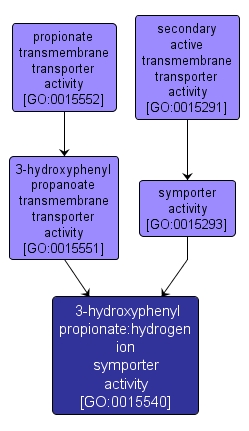GO TERM SUMMARY
|
| Name: |
3-hydroxyphenyl propionate:hydrogen ion symporter activity |
| Acc: |
GO:0015540 |
| Aspect: |
Molecular Function |
| Desc: |
Catalysis of the transfer of a solute or solutes from one side of a membrane to the other according to the reaction: 3-hydroxyphenyl propionate(out) + H+(out) = 3-hydroxyphenyl propionate(in) + H+(in). |
Synonyms:
- 3-hydroxyphenyl propionate porter activity
|
|

|
INTERACTIVE GO GRAPH
|














